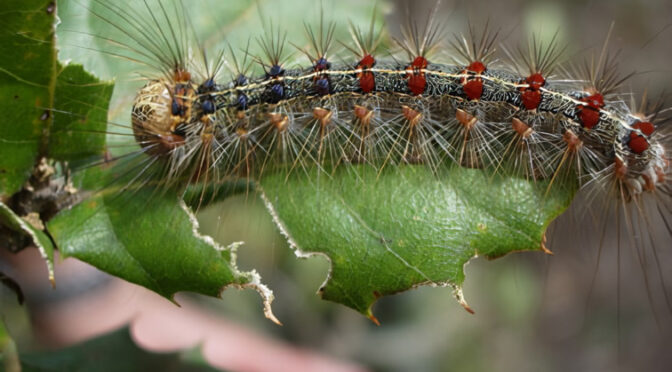Views: 251
A few days ago, the Balearic Government announced an aerial spraying plan over Menorca’s oak forests to combat “a possible expansion of the gypsy moth.” GOB asks the executive to abandon these non-selective pest control systems because the negative effects on other species and on natural controllers are catastrophic.
Two types of products are usually used in spraying. One is diflubenzuron (known as dimilin), which is a chitin synthesis inhibitor, mixed with diesel fuel and affecting practically all insects. The other one is Bacillus thuringiensis, which generates insecticidal proteins lethal to many types of caterpillars and other insects.
When a forest is sprayed from an aeroplane, the product is widely distributed and does not distinguish between the pest caterpillar—in this case Lymantria dispar—and other insects, birds, or mammals that are natural controllers of the problematic species.
Lymantria is an endemic pest, that is, native to Menorca’s oak forests. It feeds on oak leaves and causes defoliation. It shows cyclical episodes of expansion, which are regulated through predators, environmental factors, and associated parasites. Historically, the forest itself has controlled it and the oak groves have been able to recover naturally.
If the Government considers that the pest could affect oak forests, which are currently suffering from the rising temperatures caused by climate change, it should opt for fully selective systems, such as pheromone traps or fostering species such as insectivorous birds or bats.
The announcement points out that spraying could take place in several western and eastern areas, including even the Albufera des Grau natural park. Attempting to eradicate the gypsy moth with chemical or biological products may cause much more negative effects on the forest and the biodiversity that it harbors.

